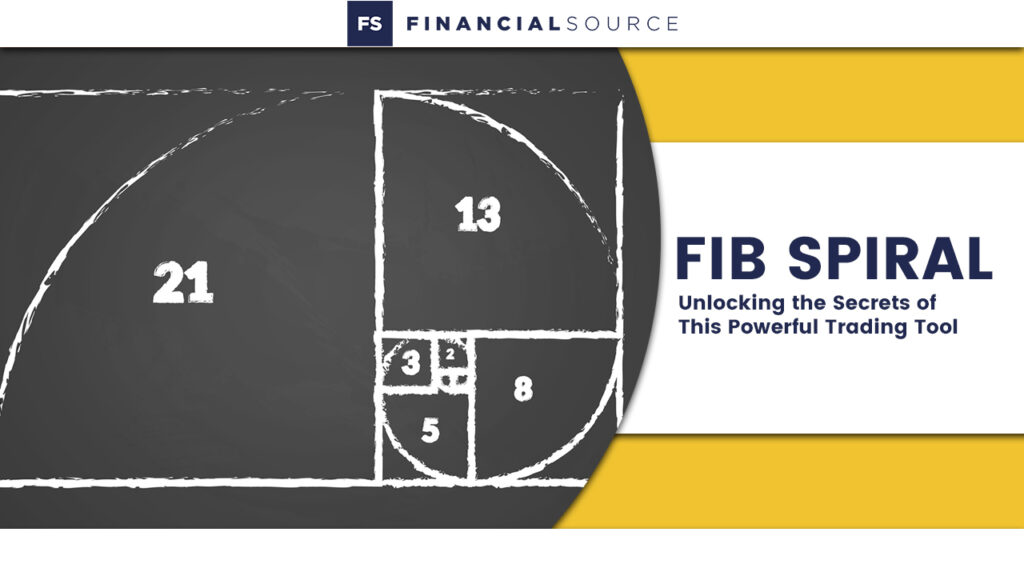Fib Spiral: Unlocking the Secrets of This Powerful Trading Tool

Getting Started with Fib Spiral Trading
When it comes to technical analysis, the fib spiral is a lesser-known but powerful tool that can help traders identify potential market turning points. Rooted in the principles of the Fibonacci sequence, the fib spiral—short for Fibonacci spiral—offers a unique way to predict price movements by applying the natural mathematical relationships found in nature to financial markets.
The fib spiral is more than just a theoretical concept; it’s a practical tool that traders can use to spot trends, set entry and exit points, and manage risk. By understanding how to effectively use the fib spiral in your trading strategy, you can gain a deeper insight into market dynamics and improve your decision-making process.
How Does a Fib Spiral Form?
To effectively incorporate the fib spiral into your trading strategy, it’s essential to understand how this pattern forms:
- Understanding the Fibonacci Sequence: The fib spiral is derived from the Fibonacci sequence, where each number is the sum of the two preceding ones (e.g., 1, 1, 2, 3, 5, 8, etc.). This sequence is then used to create a spiral, where the spacing between the curves follows Fibonacci ratios.
- Applying the Spiral to a Chart: The fib spiral is overlaid onto a price chart to identify potential support and resistance levels. By aligning the spiral’s curves with key price points, traders can predict areas where the market might reverse or accelerate.
- Confirming the Pattern: For the fib spiral to be effective, it’s crucial to confirm its relevance to the current market condition. This involves comparing the spiral’s alignment with other technical indicators and market trends to ensure it’s not just a coincidence.
Why is the Fib Spiral Important?
The fib spiral offers several advantages for traders:
- Predictive Power: The fib spiral’s roots in the Fibonacci sequence make it a powerful tool for predicting market behavior. By recognizing how prices react around the spiral’s curves, traders can anticipate future movements with greater accuracy.
- Identifying Key Levels: The fib spiral helps traders identify crucial support and resistance levels. These levels are often where significant price reversals occur, making them key points for setting entry and exit orders.
- Enhancing Risk Management: By using the fib spiral to predict where price movements might stall or reverse, traders can set more accurate stop-loss and take-profit levels, thereby improving their overall risk management strategy.
How to Use the Fib Spiral in Trading
For successful fib spiral trading, combining this technical pattern with fundamental analysis is key. Here’s how you can approach fib spiral trading:
- Align the Spiral with Key Price Points: Start by identifying significant highs and lows on your chart. Overlay the fib spiral so that its curves align with these key points. This helps to highlight potential areas of support and resistance.
- Combine with Fibonacci Retracement: The fib spiral works well when combined with Fibonacci retracement levels. By cross-referencing the spiral with retracement levels, traders can identify areas of confluence where multiple indicators suggest a price reversal.
- Watch for Confluence with Other Indicators: For greater accuracy, use the fib spiral alongside other technical indicators, such as moving averages or trendlines. When the spiral’s curves intersect with these indicators, it strengthens the signal for a potential trade.
- Set Stop-Loss and Take-Profit Levels: Successful fib spiral trading involves setting stop-loss levels just outside the spiral curve to protect against false breakouts. Take-profit levels should be proportional to the size of the spiral’s curves, as larger spirals often result in more significant price movements.
A Practical Example of Using the Fib Spiral
Consider a scenario in fib spiral trading with the EUR/USD chart. After a prolonged trend, a fib spiral aligns with significant highs and lows. Traders familiar with fib spiral trading would anticipate a potential reversal at the spiral’s curve, especially when it coincides with a Fibonacci retracement level and moving average. When the price moves in the anticipated direction, the trader could enter a position, set a stop-loss just outside the spiral, and take profit at the next spiral curve.
The Importance of Fundamentals in Fib Spiral Trading
While the fib spiral is a powerful tool, it should not be used in isolation. Integrating fundamental analysis ensures that your fib spiral predictions are grounded in the broader market context.
Get our 26 free and concise news sources to keep up to date with fundamental analysis
Key Fundamentals to Monitor:
- Economic Data Releases: Monitor key economic indicators such as GDP, unemployment rates, and inflation, which can influence market trends and affect how price moves relative to the fib spiral.
- Central Bank Policies: Interest rate decisions and monetary policies play a critical role in market movements, often causing significant shifts that can be tracked with the fib spiral.
- Geopolitical Events: Unexpected geopolitical events can lead to rapid market changes. Understanding these events can help you anticipate how the market might react and align your fib spiral analysis accordingly.
Wrapping It Up: Fib Spiral Trading Strategy
The fib spiral is a unique and powerful tool in technical analysis, offering traders a way to predict price movements based on the natural patterns of the Fibonacci sequence. By combining the fib spiral with other technical and fundamental analysis tools, you can enhance your trading strategy and increase your chances of success. Whether you’re trading forex or commodities, mastering the fib spiral can give you a significant edge in the market.